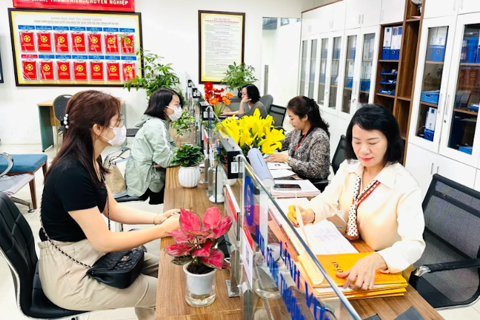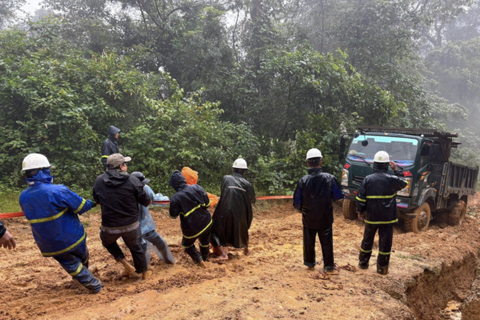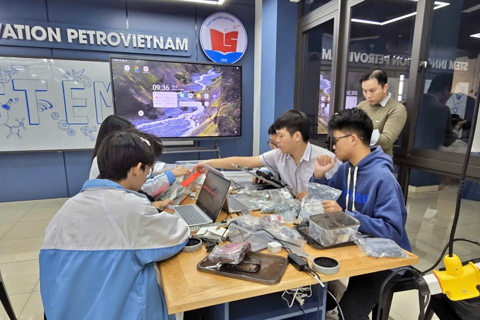Social Affairs
Vietnam: Traffic accidents decrease but remain complicated
Jul 06, 2018 / 05:42 PM
Vietnam has recorded fewer traffic accidents and life losses in the first half of this year, but much remains to be done to radically improve the situation.
The number of traffic accident cases, deaths, and injuries decreased in the first half of 2018, but the issue remains complicated, Deputy Prime Minister Truong Hoa Binh said.
He made the remarks on July 5 when attending the national teleconference reviewing Vietnam’s status of traffic accidents from the start of this year.
According to the National Traffic Safety Committee, in the first six months of 2018, 8,999 traffic accidents were recorded nationwide, down 6.19% year-on-year. As many as 4,103 people lost their lives in accidents and 7,027 others injured, representing respective year-on-year decreases of 0.75% and 11.44%.
Deputy PM Binh commended 35 provinces and cities for their reductions in the number of traffic deaths. However, the figure hiked in 26 localities, particularly in the provinces of Hai Duong, Bac Giang, Tay Ninh, and Ca Mau where the number of deaths increased more than 20% over the same period last year.
The national committee said 26% of the over 6,800 analyzed road accidents were caused by citizens driving in the wrong lane. Most of the cases happened between noon and midnight on national highways and involving motorbikes.
Deputy PM Binh said some of the serious accidents over the past six months, especially consecutive railway incidents in late May, have caused substantial human losses and to property. Overloaded trucks remain a major cause for transport infrastructure degradation, he highlighted.
Meanwhile, traffic congestion in Hanoi, Ho Chi Minh City, and on the main roads connecting the two cities is still unorganized, particularly during holidays and bad weather, or when accidents have occurred.
Speaking at the conference, Hanoi’s Vice Mayor Nguyen The Hung said that from now until the end of 2018, the city will accelerate the construction of key traffic works to reduce congestion, to intensify the application of information technology in the organization of traffic management.
The Hanoi People's Committee suggested the Ministry of Transport and Communications develop software to manage information of passenger carrying vehicles, which are registered uniformly throughout the country. Thus, the related units can directly inspect and study the promulgation of normative frameworks, technical standards, conditions and roadmaps for tricycles in general and the war invalids’ tricycles in particular.
Moreover, Hanoi will soon issue regulations on emission standards for motorcycles and regulations on old motorcycles that emit toxic gas and pollute the environment, he added.
He made the remarks on July 5 when attending the national teleconference reviewing Vietnam’s status of traffic accidents from the start of this year.

Deputy Prime Minister Truong Hoa Binh made speech at the national teleconference
|
Deputy PM Binh commended 35 provinces and cities for their reductions in the number of traffic deaths. However, the figure hiked in 26 localities, particularly in the provinces of Hai Duong, Bac Giang, Tay Ninh, and Ca Mau where the number of deaths increased more than 20% over the same period last year.
The national committee said 26% of the over 6,800 analyzed road accidents were caused by citizens driving in the wrong lane. Most of the cases happened between noon and midnight on national highways and involving motorbikes.
Deputy PM Binh said some of the serious accidents over the past six months, especially consecutive railway incidents in late May, have caused substantial human losses and to property. Overloaded trucks remain a major cause for transport infrastructure degradation, he highlighted.

Traffic accidents decrease but remain complicated
|
Speaking at the conference, Hanoi’s Vice Mayor Nguyen The Hung said that from now until the end of 2018, the city will accelerate the construction of key traffic works to reduce congestion, to intensify the application of information technology in the organization of traffic management.
The Hanoi People's Committee suggested the Ministry of Transport and Communications develop software to manage information of passenger carrying vehicles, which are registered uniformly throughout the country. Thus, the related units can directly inspect and study the promulgation of normative frameworks, technical standards, conditions and roadmaps for tricycles in general and the war invalids’ tricycles in particular.
Moreover, Hanoi will soon issue regulations on emission standards for motorcycles and regulations on old motorcycles that emit toxic gas and pollute the environment, he added.








